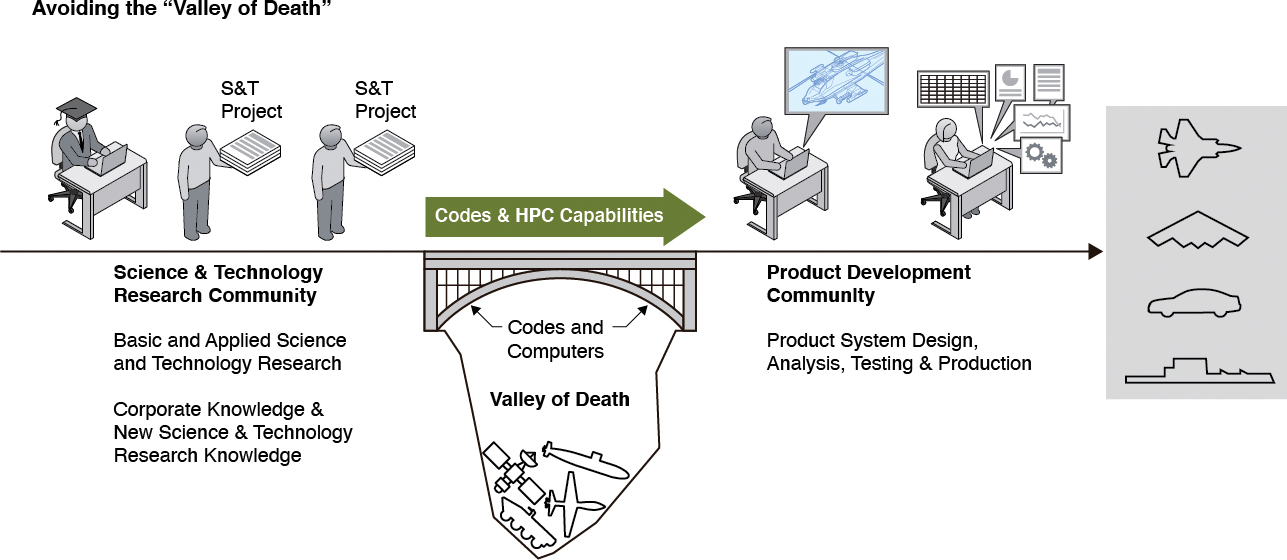- 1.0 A New Product Development Paradigm
- 1.1 Computational Engineering and Virtual Prototypes
- 1.2 Computational Science and Digital Surrogates
- 1.3 The Computational Engineering and Science Ecosystem
- 1.4 High-Performance Computers: The Enablers
- 1.5 Full-Featured Virtual Prototypes
- 1.6 The Advantages of Virtual Prototyping for Systems of Systems
- 1.7 Virtual Prototyping: A Successful Product Development and Scientific Research Paradigm
- 1.8 Historical Perspective
1.5 Full-Featured Virtual Prototypes
Only in the last decade or so has the full promise of virtual prototypes been realizable. By 2010, the processing power of the fastest high-performance computers had reached a level to support accurate predictions of the future performance and behavior of full-scale, full-featured products and complex natural systems. The previous generation of digital surrogates often suffered from a lack of adequate resolution and the inability to include all the important physics needed for accurate predictions. The capability to deploy high-resolution, multiphysics, systems-of-systems software makes full-featured (see Table 1.3) product design now possible.
Table 1.3 Attributes of Full-Featured, Physics-Based, High-Performance Computing Software Applications
1. The applications include all the major physical effects that determine the performance and behavior of the system. 2. They enable the design and generation of complex, multidimensional (3-D) digital product models of full-scale systems, not just components. 3. They support the high-resolution calculations needed to capture fine detail. 4. They use highly accurate mathematical and computational solution algorithms. 5. They can demonstrate the validity of the predictive capability of the software applications through comparison with detailed, accurate experimental test data. 6. They can predict the performance and behavior of a complex full-scale system (for example, an entire ship, airplane, or planetary weather system). 7. They are able to quantify the uncertainties of the predictions. 8. They can complete a high-fidelity, time-dependent, multidimensional, multiphysics calculation in minutes to hours, to provide timely results (compared to months to years in 1998). |
A tremendous advantage of these new capabilities is that they enable industrial, academic, and governmental organizations to collect and consolidate, in a software application, their most important and insightful past corporate knowledge and experience, along with their new research knowledge. Experienced engineers can then immediately use that software application to develop designs that are informed by this knowledge.
Very often in the past, many of the most promising results of government, academic, and industrial research programs have not been successfully transitioned into real products or applications, due to these limitations:
The lack of transition paths
The difficulties of gaining the interest, acceptance, and endorsement of the design community
Funding obstacles for developing and testing prototypes
Competition from other promising research results
In the U.S. Department of Defense, concepts that fail to transition from research into real products or operational concepts fall into what is referred to as the “Valley of Death” (Montgomery 2010). Computational engineering can help bridge this chasm by providing a path to real application of the research (see Figure 1.7).

Figure 1.7 Physics-based software with high-performance computing can provide the means to transition from science and technology discoveries to the design and production of real systems to leap over the “Valley of Death” (Courtesy CMU Software Engineering Institute)
